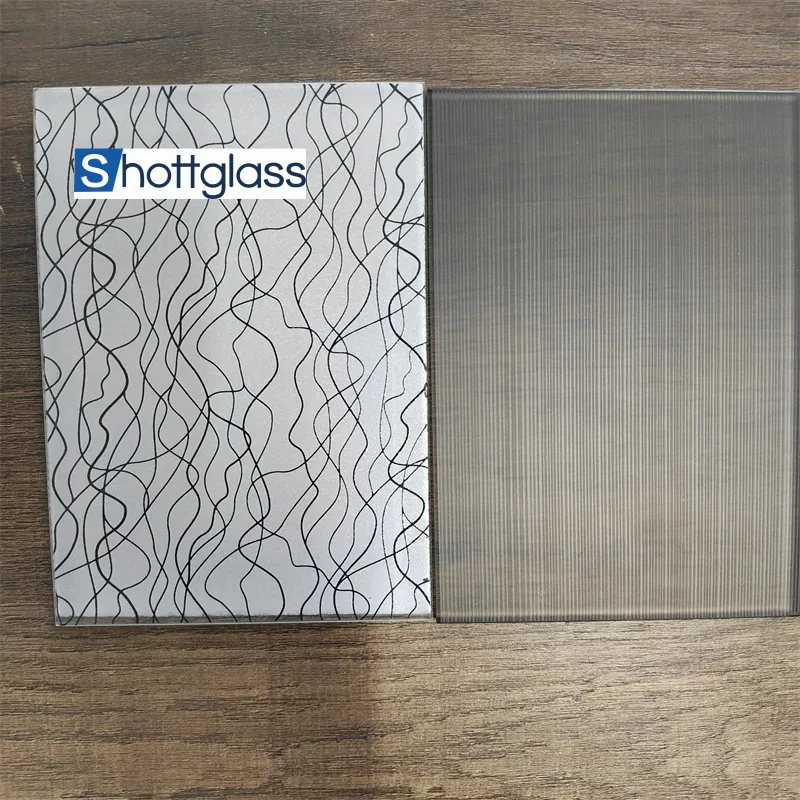Nov . 30, 2024 03:36 Back to list
low iron glass
Exploring Low Iron Glass A Transparent Innovation
In the realm of modern architecture and design, the materials used can significantly influence the aesthetic and functional qualities of a space. One such material that has been gaining traction in recent years is low iron glass. Renowned for its superior clarity and minimal green tint, low iron glass has emerged as a preferred choice for architects, builders, and interior designers aiming to create bright, open environments. This article explores the characteristics, benefits, and applications of low iron glass, shedding light on why it has become a staple in contemporary design.
Understanding Low Iron Glass
Low iron glass is produced using a specially formulated batch that contains minimal iron oxide, which is responsible for the greenish tint found in standard float glass. By reducing the iron content, manufacturers create a glass that is significantly clearer and more transparent. This distinctive clarity allows for a more accurate representation of colors and an unobstructed view, making it an ideal choice for various applications. Typically, low iron glass has a light transmission of over 90%, compared to about 80% for standard glass, resulting in vibrant, true-to-life visuals.
Benefits of Low Iron Glass
1. Clarity and Aesthetics One of the primary advantages of low iron glass is its exceptional clarity. This property enhances transparency, making it ideal for high-end architectural projects and displays. When used in façades or window installations, low iron glass provides an unobtrusive view that maximizes natural light while showcasing the surroundings brilliantly.
2. Color Accuracy The lack of green tint allows for better color accuracy when viewed through low iron glass, making it particularly beneficial for art galleries, museums, and retail spaces. Exhibitors can display artwork and products without the distortion of colors, ensuring that the true essence of the items is preserved.
3. Energy Efficiency Low iron glass not only allows more natural light into spaces but also contributes to energy efficiency. By enabling maximum daylight penetration, it can reduce reliance on artificial lighting, leading to lower energy consumption. When combined with other energy-efficient materials, it plays a significant role in achieving sustainable building practices.
4. Versatility This type of glass is highly versatile and can be used in various applications, including structural glass facades, railings, skylights, and shower enclosures. Its durability and resistance to UV radiation make it suitable for both interior and exterior settings.
low iron glass

5. Safety and Performance Low iron glass can be manufactured to meet various safety standards, including tempered and laminated options. This ensures that it can withstand impacts and provide necessary protection while maintaining its aesthetic qualities.
Applications of Low Iron Glass
Low iron glass is increasingly being used in a myriad of architectural and design contexts. Some notable applications include
- Skylights and Atriums The clarity of low iron glass makes it an excellent choice for skylights and atriums, where maximizing natural light is a key concern. Its transparency allows for unobstructed views of the sky without compromising the structural integrity of the design.
- Frameless Glass Systems The use of low iron glass in frameless glass systems enhances the modern, sleek look of building designs. It offers clean lines and an uninterrupted visual connection between indoor and outdoor spaces.
- Retail Displays Storefronts and displays benefit significantly from low iron glass, as it helps products stand out, attracting customers' attention without color distortion.
- Museum and Gallery Spaces Various cultural institutions use low iron glass for windows and display cases, ensuring that artworks are viewed in the best possible light.
Conclusion
As technology advances and the construction industry continues to evolve, low iron glass stands out as a transparent innovation that aligns with contemporary needs. Its remarkable clarity, energy efficiency, and aesthetic appeal make it a valuable asset in modern architecture and design. By embracing low iron glass, designers and architects are not only enhancing the look of their spaces but also ensuring that they remain functional, sustainable, and true to the essence of their purpose. The future of building designs is undoubtedly transparent, with low iron glass leading the way.
-
Safety and Style with Premium Laminated Glass Solutions
NewsJun.24,2025
-
Reinvents Security with Premium Wired Glass
NewsJun.24,2025
-
Premium Float Glass Line for Modern Architecture
NewsJun.24,2025
-
Low Emissivity Glass for Energy-Efficient Architecture
NewsJun.24,2025
-
High-Performance Insulated Glass Solutions for Modern Architecture
NewsJun.24,2025
-
Elevates Interior Style with Premium Silver Mirror
NewsJun.24,2025
Related PRODUCTS














